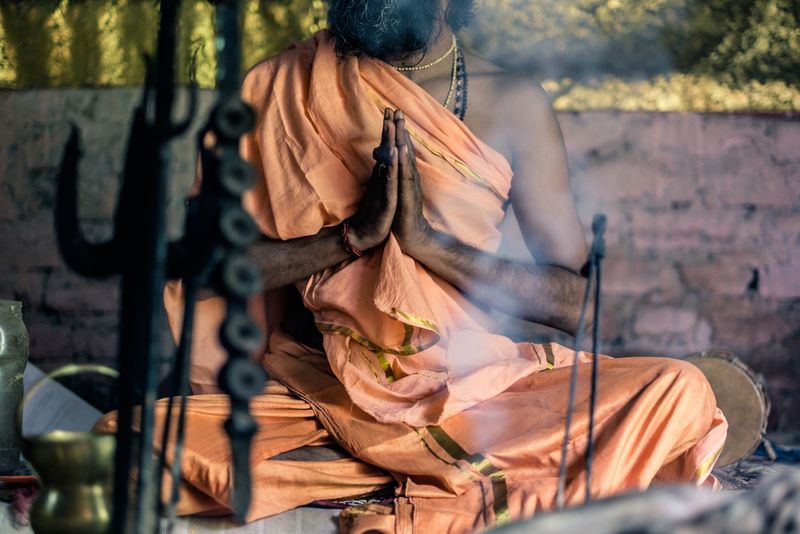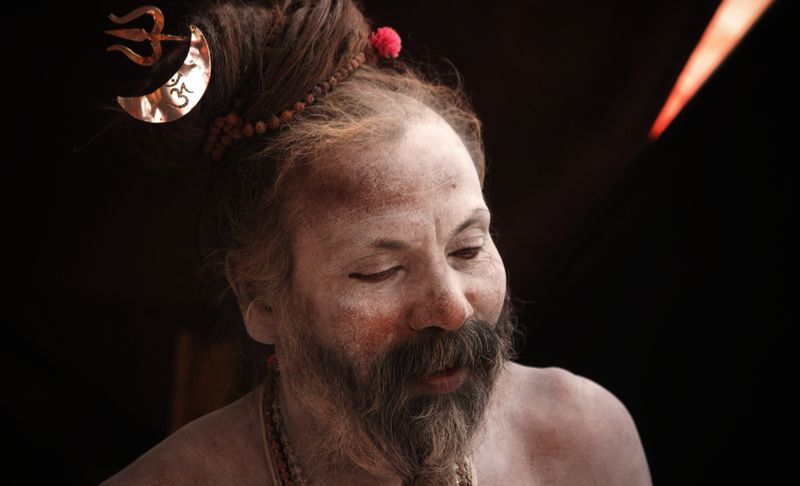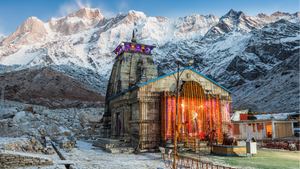Beyond the life that we live — in the jungles of the Himalayas, where the air whispers ancient secrets, and the snow-capped peaks stand as guardians of mysticism, there exists a sect of ascetics whose practices and beliefs transcend the ordinary— the Aghori Sadhus. Never heard of this term before? Well, here is a well-briefed exploration through the enigmatic world of these spiritual renunciates, offering a window into their profound and often misunderstood way of life.
Here’s all we know about Aghori Sadhus
Who are Aghori sadhus?

The Aghori are seekers of moksha, or liberation, who embrace what society shuns. Their path is one of extreme asceticism and unconventional rituals, rooted in the Tantric traditions. By confronting death and decay directly, they seek to transcend the duality of purity and impurity, life and death, thereby reaching a state of ultimate awareness and unity with Shiva, their deity who embodies creation and destruction.
What do Aghori sadhus do?

Aghori practices are the belief in the sanctity of all matter, including one’s which is typically considered taboo. They are known to reside in cremation grounds, meditating upon or sometimes even using human remains in their rituals. This profound connection with death serves to obliterate the ego and the attachments that bind one to the cycle of birth and rebirth.
When did Aghori culture come into existence?
The Aghori tradition, with its roots deeply embedded in ancient Indian ascetic practices, is believed to have emerged around the 7th and 8th centuries, though the exact origins remain shrouded in the mists of time.
This esoteric sect is an offshoot of the Kapalika and Kalamukha order, which dates back to the early mediaeval period of Indian history, thereby inheriting a spiritual lineage that emphasises the transcendence of societal norms and the pursuit of spiritual liberation through unconventional means.
Over the centuries, the Aghoris have maintained their unique way of life, evolving in the shadows of mainstream Hinduism, yet profoundly influencing Indian spirituality with their radical approach to the quest for enlightenment.
Why are Aghoris based in the Himalayas?
The rugged terrain of the Himalayas provides the perfect backdrop for the Aghori's ascetic practices. The harsh conditions and the isolation from mainstream society serve as both a physical and spiritual crucible, where the Aghoris can engage in their practices with undivided focus. The natural surroundings of the Himalayas, with its rivers, mountains, and forests, also play a crucial role in the Aghori's spiritual activities, serving as both a source of meditation and a place to perform rituals.
Life of Aghori Sadhus

The diet of an Aghori Sadhu challenges societal norms to its core. They partake of what is left behind, including, controversially, the flesh of the dead. This act is symbolic, a physical manifestation of their philosophy that everything in the universe is imbued with divinity and, therefore, pure. It's a potent reminder of their belief in the fleeting nature of physical existence and the illusion of separation between the sacred and the profane.
Their rituals, often shrouded in secrecy, are said to include powerful Tantric rites. These practices, misunderstood by many, are not for the faint of heart. They include the chanting of mantras, meditation, and the use of substances that alter consciousness to achieve spiritual insights. Through these intense and focused rituals, Aghori Sadhus believe they can attain siddhis, or supernatural abilities, furthering their quest for enlightenment.
Despite their seemingly macabre practices, the essence of Aghorism is the pursuit of simplicity and detachment. Aghori Sadhus embody the rejection of societal norms and materialism, striving instead for a state of detachment and simplicity that transcends the physical realm. They remind us of the impermanence of life and the importance of looking beyond the superficial to understand the deeper truths of existence.
Engaging with the Aghori way of life requires an open mind and a willingness to look beyond the surface. Their practices, while extreme, are a path to understanding the complex tapestry of human existence and spirituality. In the isolation of the Himalayas, these ascetics continue their quest for enlightenment, challenging our perceptions and inviting us to reconsider the boundaries of consciousness and the sacred.




